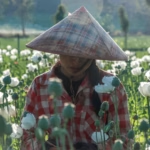Mapping Plastic Pollution in Myanmar’s Bago River: A Regional Wake-Up Call
As plastic pollution gains global attention, a growing body of research is turning its focus to inland waterways—key conduits for plastic waste from land to sea. One such effort, led by Hurley, Snekkevik, Phoo, and colleagues, offers an in-depth look at macroplastic contamination in the Bago River, Myanmar. Their study, recently published in Microplastics & Nanoplastics, provides one of the first comprehensive assessments of large plastic debris—defined as pieces larger than 5 mm—in a Southeast Asian river system.
Why the Bago River?
The Bago River is a vital freshwater artery in Myanmar, supporting biodiversity, agriculture, fishing, and local communities. As urban populations expand and industrial activities increase, rivers like Bago are under immense pressure from unmanaged waste. This study positions the river as a case study for understanding how plastic pollution accumulates, spreads, and impacts both ecosystems and livelihoods in rapidly developing countries.
Comprehensive Fieldwork and Methods
The research team conducted a systematic sampling campaign along multiple points of the river, analyzing both surface water and riverbank sediments. Rather than a one-time snapshot, the study captured seasonal variations and spatial distribution, helping researchers understand how plastic moves and builds up over time—particularly during the monsoon season when floods redistribute debris downstream.
This detailed monitoring revealed that macroplastics—such as discarded packaging, fishing gear, and industrial waste—are widespread throughout the Bago River. Plastic accumulation was especially high near urban centers and informal dumping areas, reinforcing the direct link between human activity and river pollution.
Tracing Pollution Sources
Using material characterization and chemical analysis, including polymer identification techniques like FTIR and scanning electron microscopy (SEM), the researchers traced plastic types back to likely sources. These included:
Poor municipal waste management
Upstream industrial discharge
Informal and unregulated recycling operations
The findings paint a complex picture of both point-source and diffuse-source pollution. This level of detail provides valuable insight for targeted interventions and policy planning.
Environmental and Socio-Economic Impact
The study underscores the Bago River’s role not just as an ecological corridor, but also as a critical resource for agriculture, transportation, and fishing. Plastic waste in the river doesn’t just threaten aquatic life—it disrupts entire food chains, exposes communities to contaminated water, and undermines livelihoods.
By connecting environmental data with socio-economic context, the authors argue for integrated responses that go beyond conservation to include public health, livelihood security, and equity. Plastic pollution is not just an ecological issue—it’s a human one.
Toward Scalable, Low-Cost Monitoring
Importantly, the study introduces a cost-effective, replicable monitoring approach designed for low-resource settings like Myanmar. The team prioritized tools and protocols that can be adopted by local authorities and NGOs without relying on expensive or high-tech equipment. This practical innovation empowers communities and governments to build sustained, localized pollution surveillance systems—critical for long-term impact.
Broader Implications and Call to Action
This research has wide-reaching implications beyond the Bago River. It establishes a model for riverine plastic monitoring that could be applied across Southeast Asia and other developing regions facing similar challenges. The authors call for:
Expansion of river monitoring networks
Regional collaboration across borders
Improved waste management infrastructure
Community education programs
Stronger environmental governance
By mapping both the pollution and its pathways, the study gives policymakers, conservationists, and stakeholders the data they need to act decisively.
Conclusion: Freshwater Rivers Are the Frontlines
While much of the conversation around plastic pollution has focused on oceans, this study reminds us that the problem often begins upstream. Rivers like the Bago act as both victims and vectors of plastic waste—accumulating debris from land and transporting it toward coastal and marine ecosystems.
Hurley and colleagues’ work is a wake-up call: we must treat freshwater environments not just as passive conduits, but as active battlegrounds in the fight against plastic pollution. Their research lays the groundwork for science-driven action and offers a hopeful path forward—grounded in data, driven by local engagement, and aligned with global sustainability goals.
Thank you for reading! Visit us anytime at Myanmar.com for more insights and updates about Myanmar.
Related posts:
 Myanmar Opium Poppy Farming Surges Amid Conflict
Myanmar Opium Poppy Farming Surges Amid Conflict
 Myanmar Earthquake – A Nation in Crisis Amidst Disaster
Myanmar Earthquake – A Nation in Crisis Amidst Disaster
 Inle Lake Buddhist Festival in Myanmar | Tradition & Renewal
Inle Lake Buddhist Festival in Myanmar | Tradition & Renewal
 Dozens Killed in Chaung-U as Myanmar Military Launches Paraglider Attack
Dozens Killed in Chaung-U as Myanmar Military Launches Paraglider Attack
 Starlink Fuels Myanmar Scam Networks, U.S. Demands Geoblock
Starlink Fuels Myanmar Scam Networks, U.S. Demands Geoblock
 Dr. Sasa Resigns from NUG, Restructuring Expected Inside Shadow Government
Dr. Sasa Resigns from NUG, Restructuring Expected Inside Shadow Government
